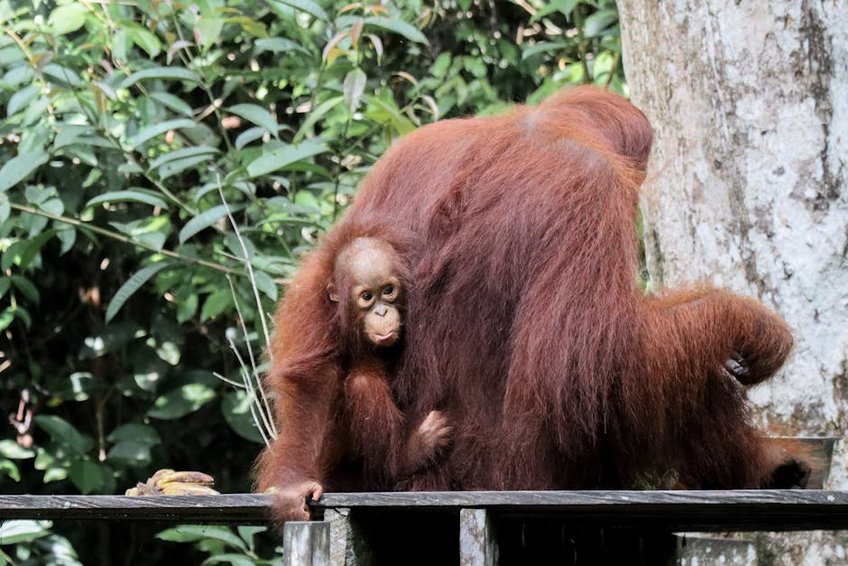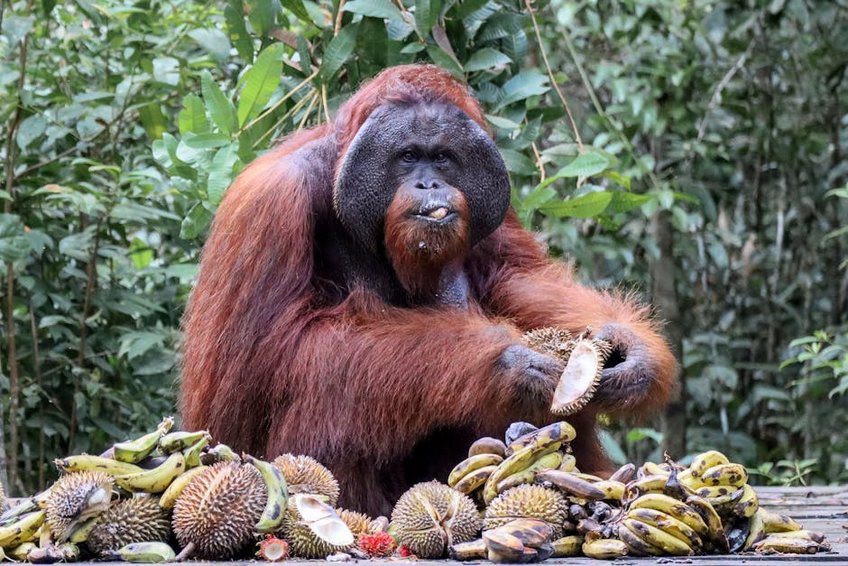Borneo Orangutan Reserve – A Life-Changing Wildlife Adventure
Visiting a Borneo Orangutan Reserve represents one of the most profound wildlife experiences you can have anywhere on Earth. These incredible reserves offer you the rare opportunity to witness orangutans in their natural habitat, swinging through ancient rainforest canopies and displaying behaviors that will leave you in awe. As one of our closest genetic relatives, sharing approximately 97% of our DNA, observing these magnificent great apes creates a connection that transcends typical wildlife viewing. The Borneo Orangutan Reserve experience combines conservation education, eco-tourism, and pure adventure, making it an essential destination for any nature lover. You’ll not only create unforgettable memories but also contribute directly to the preservation of these critically endangered creatures. From the moment you enter the dense rainforest and hear the distinctive calls echoing through the trees, you’ll understand why this experience ranks among the world’s most meaningful wildlife encounters.
Borneo Orangutan Reserve Essential Information
Understanding what makes the Borneo Orangutan Reserve so special begins with recognizing its conservation mission. These protected areas serve as vital sanctuaries for orangutans whose habitats have been destroyed by deforestation and palm oil plantations. The reserves typically function as rehabilitation centers where orphaned or rescued orangutans learn essential survival skills before being reintroduced to protected forest areas. Your visit directly supports these conservation efforts through entry fees and donations, making you an active participant in preserving Borneo’s biodiversity. The experience differs significantly from zoo visits, as you observe semi-wild orangutans displaying natural behaviors in expansive natural environments. Most reserves offer guided tours led by knowledgeable conservationists who provide fascinating insights into orangutan behavior, conservation challenges, and the complex ecosystem that supports these incredible primates.
Conservation Significance – Why These Reserves Matter
- Bornean orangutans are critically endangered with populations declining by over 50% in the past 60 years due to habitat loss and illegal hunting
- Reserves protect approximately 20,000-25,000 remaining wild orangutans while rehabilitating hundreds of rescued individuals annually
- Your visit contributes $50-100 directly to conservation efforts per person, funding food, veterinary care, and forest protection patrols
- Budget travelers can expect to spend $800-1200 for a 5-day package including accommodation, meals, and guided tours from gateway cities
- Mid-range options typically cost $1500-2500 featuring better lodging, additional activities, and more personalized guided experiences
- Luxury tours range from $3000-5000+ offering premium eco-lodges, private guides, and exclusive wildlife viewing opportunities
- Bornean Orangutan Survival Foundation Official Site
- WWF Orangutan Conservation Information
What Makes This Experience Unique
Unlike many wildlife experiences where animals remain distant or hidden, Borneo Orangutan Reserve visits often provide remarkably close observations during feeding sessions. However, it’s crucial to understand that these are not performances but necessary supplemental feedings for rehabilitated orangutans still learning forest survival skills. The authenticity of seeing these intelligent creatures making conscious choices about food, social interactions, and movement patterns creates a profoundly moving experience. You’ll witness individual personalities emerge – some orangutans are curious and interactive while others prefer observing from a distance. This raw, unfiltered encounter with one of nature’s most intelligent species creates memories that typically last a lifetime and often inspire visitors to become advocates for conservation long after they return home.

Borneo Orangutan Reserve Planning Your Trip
Planning your Borneo Orangutan Reserve adventure requires careful consideration of timing, logistics, and preparation. The best approach involves combining your reserve visit with exploration of Borneo’s other incredible attractions, creating a comprehensive Malaysian or Indonesian adventure. Most visitors access the reserves from major gateway cities like Kota Kinabalu in Malaysian Borneo or Pangkalan Bun in Indonesian Borneo, then travel overland to the jungle locations. You’ll need to book tours in advance through reputable operators as independent visits are generally not permitted for conservation reasons. Physical preparation is also important – while most reserve visits involve relatively easy walking on boardwalks and well-maintained trails, the tropical climate demands proper hydration, sun protection, and appropriate clothing. Packing should include rain gear even during dry seasons, as tropical showers can occur unexpectedly in rainforest environments.
Best Time to Visit Borneo Orangutan Reserve
The optimal time for visiting Borneo Orangutan Reserve depends on your weather preferences and wildlife viewing priorities. Dry season from March to October offers more reliable weather with less rainfall, making transportation easier and trails more accessible. However, the wet season from November to February brings lush vegetation and fewer tourists, creating a more intimate experience. June through August represents peak season with the best weather conditions but also larger crowds and higher prices. For optimal orangutan viewing, consider that feeding times remain consistent year-round, but wild sightings might increase during fruiting seasons between June and August. Shoulder months of March-May and September-October often provide the best balance of decent weather, manageable crowds, and good wildlife viewing opportunities throughout the Borneo Orangutan Reserve areas.
Budget Planning and Costs
Essential Preparation Checklist
Preparing properly for your Borneo Orangutan Reserve visit ensures you maximize both enjoyment and conservation effectiveness. Essential items include waterproof hiking shoes with good grip, lightweight long-sleeved clothing for sun and insect protection, and a quality rain jacket. Binoculars significantly enhance wildlife viewing, while a camera with zoom lens helps capture memories without approaching too closely. Health preparations should include consulting your doctor about recommended vaccinations and bringing adequate supplies of malaria prophylaxis if visiting remote areas. Mental preparation is equally important – understand that wildlife sightings can never be guaranteed, and the experience focuses on ethical observation rather than entertainment. Finally, prepare questions for your guides about conservation efforts, as their insights will deepen your appreciation for the complex work happening at these vital reserves.
Borneo Orangutan Reserve Top Attractions and Activities
The Borneo Orangutan Reserve experience extends far beyond simply observing these magnificent apes. Most reserves offer comprehensive educational programs that include jungle trekking, nocturnal wildlife spotting, and visits to conservation facilities where you learn about rehabilitation processes. The main attraction remains the scheduled feeding sessions where orangutans emerge from the forest to supplement their diet, providing incredible viewing opportunities as they swing from ropes and interact with each other. Many reserves also feature canopy walkways that offer unique perspectives of the rainforest ecosystem and sometimes unexpected wildlife sightings. Night walks reveal a completely different world of nocturnal creatures including slow lorises, flying squirrels, and various owl species. Some larger reserves offer multi-day programs including river safaris, traditional village visits, and advanced jungle trekking that provides deeper immersion into Borneo’s incredible biodiversity beyond the orangutan conservation areas.
Must-See Highlights
No Borneo Orangutan Reserve visit is complete without experiencing the morning and afternoon feeding sessions, where you’ll witness orangutans displaying remarkable intelligence and social behaviors. The viewing platforms at sites like Sepilok Rehabilitation Centre in Malaysia or Tanjung Puting National Park in Indonesia provide front-row seats to observe mothers teaching infants crucial survival skills, dominant males establishing hierarchy, and juveniles practicing climbing techniques. The nursery areas where youngest orphans receive round-the-clock care offer particularly heartwarming moments, though viewing may be restricted to minimize human imprinting. Canopy walkways present another highlight, allowing you to experience the rainforest from the orangutan’s perspective while potentially spotting other wildlife like hornbills, macaques, and various monkey species. Finally, the visitor centers and museums at most reserves provide fascinating context about conservation challenges and successes through interactive exhibits and documentary screenings.
Hidden Gems and Local Favorites
Beyond the main attractions, several lesser-known experiences can make your Borneo Orangutan Reserve visit truly extraordinary. Early morning jungle walks before official opening times often provide magical moments of wildlife activity without crowds, including potential sightings of wild orangutans building overnight nests. Many reserves have secondary feeding stations deeper in the forest that receive fewer visitors but sometimes offer more natural behaviors as orangutans feel less observed. Some conservation centers offer volunteer programs where you can assist with enrichment activities or habitat maintenance under expert supervision. Local guides often know specific trees that bear fruit at different times, increasing chances of spontaneous wild encounters. Night boat safaris along jungle rivers in Indonesian reserves reveal completely different perspectives with eyes glowing in flashlight beams and the mysterious sounds of the nocturnal rainforest coming alive around you.
Borneo Orangutan Reserve Practical Travel Information
Navigating the practical aspects of visiting Borneo Orangutan Reserve requires understanding the distinct logistics between Malaysian and Indonesian sides of the island. Malaysian Borneo offers more developed tourism infrastructure with easier road access to reserves like Sepilok near Sandakan, while Indonesian Borneo provides more adventurous experiences reaching destinations like Tanjung Puting National Park via traditional riverboats. Visa requirements differ significantly – most Western passport holders receive visa-free entry to Malaysia for 90 days, while Indonesia typically offers 30-day visa-free entry or longer visa-on-arrival options. Health considerations include malaria prophylaxis for remote areas, comprehensive travel insurance that covers emergency evacuation, and vaccinations for hepatitis A, typhoid, and tetanus. Currency exchange should be handled in major cities before traveling to reserve areas, though most tours accept USD or EUR payments in addition to local currency.
| Category | Options/Features | Price Range (USD) |
|---|---|---|
| Accommodation | Jungle lodges, eco-resorts, homestays | $30-500/night |
| Tour Packages | Day trips, 3-5 day packages, luxury safaris | $100-400/day |
| Transportation | River boats, 4WD vehicles, domestic flights | $50-200/segment |


